- Home
- Franz Kafka
The Trial: A New Translation Based on the Restored Text
The Trial: A New Translation Based on the Restored Text Read online
The first page of Kafka’s manuscript of The Trial.
Copyright © 1998 by Schocken Books Inc.
Preface copyright © 1998 by Breon Mitchell
All rights reserved under International and Pan-American
Copyright Conventions. Published in the United States by Schocken Books Inc., New York, and simultaneously in Canada by Random House of Canada Limited, Toronto. Distributed by Pantheon Books, a division of Random House, Inc., New York.
Originally published in German as Der Prozess by Verlag die Schmiede, Berlin, 1925, by Schocken Verlag, Berlin, 1935, and by Schocken Books Inc., New York, 1946. Copyright 1925 by Verlag die Schmiede. Copyright renewed 1952 by Schocken Books Inc. Copyright 1935 by Schocken Verlag. Copyright renewed 1963 by Schocken Books Inc. Copyright 1946 and renewed 1974 by Schocken Books Inc. This critical edition was originally published in Germany by S. Fischer Verlag GmbH, Frankfurt am Main, in 1990. Copyright © 1990 by Schocken Books Inc. This translation was originally published in hardcover by Schocken Books in 1998.
Schocken and colophon are trademarks of Random House, Inc.
Library of Congress Cataloging-in-Publication Data
Kafka, Franz 1883–1924.
[Prozess. English]
The Trial / Franz Kafka; a new translation, based on the restored text; translated and with a preface by Breon Mitchell.
p. cm.
eISBN: 978-0-307-82944-3
I. Mitchell, Breon. II. Title
PT2621.A6P7613 1998
833′.912—dc21 98-3447
Random House Web Address: www.randomhouse.com/
v3.1
CONTENTS
Cover
Title Page
Copyright
Publisher’s Note
Translator’s Preface
Arrest
Conversation with Frau Grubach
Then Fräulein Bürstner
Initial Inquiry
In the Empty Courtroom
The Student
The Offices
The Flogger
The Uncle
Leni
Lawyer
Manufacturer
Painter
Block, the Merchant
Dismissal of the Lawyer
In the Cathedral
The End
Fragments
B.’s Friend
Public Prosecutor
To Elsa
Struggle with the Vice President
The Building
Journey to His Mother
The Life of Franz Kafka
Bibliography
PUBLISHER’S NOTE
“Dearest Max, my last request: Everything I leave behind me … in the way of diaries, manuscripts, letters (my own and others’), sketches, and so on, [is] to be burned unread.… Yours, Franz Kafka”
These famous words written to Kafka’s friend Max Brod have puzzled Kafka’s readers ever since they appeared in the postscript to the first edition of The Trial, published in 1925, a year after Kafka’s death. We will never know if Kafka really meant for Brod to do what he asked; Brod believed that it was Kafka’s high artistic standards and merciless self-criticism that lay behind the request, but he also believed that Kafka had deliberately asked the one person he knew would not honor his wishes (because Brod had explicitly told him so). We do know, however, that Brod disregarded his friend’s request and devoted great energy to making sure that all of Kafka’s works—his three unfinished novels, his unpublished stories, diaries, and letters—would appear in print. Brod explained his reasoning thus:
My decision [rests] simply and solely on the fact that Kafka’s unpublished work contains the most wonderful treasures, and, measured against his own work, the best things he has written. In all honesty I must confess that this one fact of the literary and ethical value of what I am publishing would have been enough to make me decide to do so, definitely, finally, and irresistibly, even if I had had no single objection to raise against the validity of Kafka’s last wishes. (From the Postscript to the first edition of The Trial)
In 1925, Max Brod convinced the small avant-garde Berlin publisher Verlag die Schmiede to publish The Trial, which Brod prepared for publication from Kafka’s unfinished manuscript. Next he persuaded the Munich publisher Kurt Wolff to publish his edited manuscript of The Castle, also left unfinished by Kafka, in 1926, and in 1927 to bring out Kafka’s first novel, which Kafka had meant to entitle Der Verschollene (The Man Who Disappeared), but which Brod named Amerika. The first English translation of The Trial, by Edwin and Willa Muir (who had already translated The Castle in 1930), appeared in 1937 simultaneously in England and the United States, the latter edition published by Knopf with illustrations by Georg Salter. Neither the German nor the English-language editions sold well, although they were critically well received.
Undeterred, Max Brod enlisted the support of Martin Buber, André Gide, Hermann Hesse, Heinrich Mann, Thomas Mann, and Franz Werfel for a public statement urging the publication of Kafka’s collected works as “a spiritual act of unusual dimensions, especially now, during times of chaos.” Since Kafka’s previous publishers had closed during Germany’s economic depression, he appealed to Gustav Kiepenheuer to undertake the project. Kiepenheuer agreed, but on condition that the first volume be financially successful. But the Nazi rise to power in 1933 forced Kiepenheuer to abandon his plans. Between 1933 and 1938 German Jews were barred from teaching or studying in “German” schools, from publishing or being published in “German” newspapers or publishing houses, or from speaking and performing in front of “German” audiences. Publishers that had been owned or managed by Jews, such as S. Fischer Verlag, were quickly “Aryanized” and ceased to publish books by Jews. Kafka’s works were not well enough known to be banned by the government or burned by nationalist students, but they were “Jewish” enough to be off limits to “Aryan” publishers.
When the Nazis introduced their racial laws they exempted Schocken Verlag, a Jewish publisher, from the ban against publishing Jewish authors on condition that its books would be sold only to Jews. Founded in 1931 by the department store magnate Salman Schocken, this small publishing company had already published the works of Martin Buber and Franz Rosenzweig as well as those of the Hebrew writer S. Y. Agnon as part of its owner’s interest in fostering a secular Jewish literary culture.
Max Brod offered Schocken the world publishing rights to all of Kafka’s works. This offer was initially rejected by Lambert Schneider, Schocken Verlag’s editor in chief, who regarded Kafka’s work as outside his mandate to publish books that could reacquaint German Jewry with its distinguished heritage. He also doubted its public appeal. His employer also had his doubts about the marketability of six volumes of Kafka’s novels, stories, diaries, and letters, although he recognized their universal literary quality as well as their potential to undermine the official campaign to denigrate German Jewish culture. But he was urged by one of his editors, Moritz Spitzer, to see in Kafka a quintessentially “Jewish” voice that could give meaning to the new reality that had befallen German Jewry and would demonstrate the central role of Jews in German culture. Accordingly, Before the Law, an anthology drawn from Kafka’s diaries and short stories, appeared in 1934 in Schocken Verlag’s Bucherei series, a collection of books aimed to appeal to a popular audience, and was followed a year later—the year of the infamous Nuremburg Laws—by Kafka’s three novels. The Schocken editions were the first to give Kafka widespread distribution in Germany. Martin Buber, in a letter to Brod, praised these volumes as “a great possession” that could “show how one can live marginally with co
mplete integrity and without loss of background.” (From The Letters of Martin Buber [New York: Schocken Books, 1991], p. 431)
Inevitably, many of the books Schocken sold ended up in non-Jewish hands, giving German readers—at home and in exile—their only access to one of the century’s greatest writers. Klaus Mann wrote in the exile journal Sammlung that “the collected works of Kafka, offered by the Schocken Verlag in Berlin, are the noblest and most significant publications that have come out of Germany.” Praising Kafka’s books as “The epoch’s purest and most singular works of literature,” he noted with astonishment that “this spiritual event has occurred within a splendid isolation, in a ghetto far from the German cultural ministry.” Quite probably in response to Mann’s article, on July 22, 1935, a functionary of the German cultural ministry wrote to Schocken complaining that the publisher was “still selling the complete works of Franz Kafka, edited by Max Brod,” although the work of both Kafka and Brod had been placed by the Nazis on the “list of harmful and undesirable writings” three months earlier. Schocken moved his production to Prague, where he published Kafka’s diaries and letters. Interestingly, despite the Nazi protest against the collected works, he was able to continue printing and distributing his earlier volume of Kafka’s short stories in Germany itself until the government closed down Schocken Verlag in 1939. The German occupation of Prague that same year put an end to Schocken’s operations in Europe.
In 1939, he re-established Schocken Books in Palestine, where he had lived intermittently since 1934, and editions of Kafka’s works in the renewed Hebrew language were among its first publications. In 1940, he moved to New York, where five years later he opened Schocken Books with Hannah Arendt and Nahum Glatzer as his chief editors. While continuing to publish Kafka in German, Schocken reissued the existing Muir translations of the novels in 1946 and commissioned translations of the letters and diaries in the 1950s, thus placing Kafka again at the center of his publishing program. Despite a dissenting opinion from Edmund Wilson in The New Yorker (where he nonetheless compared Kafka to Nikolai Gogol and Edgar Allan Poe), a postwar Kafka craze began in the United States; translations of all of Kafka’s works began to appear in many other languages; and in 1951 the German Jewish publisher S. Fischer of Frankfurt (also in exile during the Nazi period) obtained the rights to publish Kafka in Germany. As Hannah Arendt wrote to Salman Schocken, Kafka had come to share Marx’s fate: “Though during his lifetime he could not make a decent living, he will now keep generations of intellectuals both gainfully employed and well-fed.” (Letter, August 9, 1946, Schocken Books Archive, New York)
Along with the growing international recognition of Franz Kafka as one of the great writers of our century, scholars began to raise doubts about the editorial decisions made by Max Brod. In editing The Trial for its original German publication in 1925, Brod’s primary concern had been to provide an accessible, unified text that would establish Kafka—hitherto known only as a “master of the small form”—as a great novelist. As he explained in the postscript to that edition, he had sought to reduce the fragmentary nature of the manuscript by publishing only the finished chapters and by making minor additions to the virtually finished eighth chapter (“Block, the Merchant, Dismissal of the Lawyer”), expanding the numerous contractions (“Fräulein Bürstner” for “F.B.,” “Titorelli” for “T.”), and correcting “obvious” slips of the pen. Another, serious question was raised by the sequence of the chapters, which Kafka had entitled but not numbered, and which Brod ordered for the first edition according to internal narrative logic, some textual evidence, and his own memory of Kafka’s reading of the chapters to him. In the 1946 postscript to the third edition of the novel, Brod admitted that further scrutiny of the manuscript made it appear possible that “Kafka intended the episode now designated as the fifth chapter to be in fact the second.” He did not change the original chapter sequence, however, claiming that the order “must forever remain doubtful.”
Salmon Schocken was among the most eager for new, critical editions of Kafka’s works. “The Schocken editions are bad,” he wrote in an internal memo. “Without any question, new editions that include the incomplete novels would require a completely different approach.” (September 29, 1940, Schocken Archives, Jerusalem) However, Max Brod’s refusal to give up the Kafka archive in his Tel Aviv apartment or to allow scholars access to it made such new editions impossible until 1956, when the threat of war in the Middle East prompted him to deposit the bulk of the archives, including the manuscript of The Castle, in a Swiss vault. When the young Oxford Germanist Malcolm Pasley learned of the archives’ whereabouts, he received permission from Kafka’s heirs in 1961 to deposit them in Oxford’s Bodleian Library, where they were subsequently made available for scholarly inspection. The manuscript of The Trial, which Kafka had given to Brod in 1920, remained in Brod’s personal possession, passing to his companion and heiress Ilse Ester Hoffe when he died in 1968. It was not until the late 1980s that Ms. Hoffe agreed to sell the manuscript, which was auctioned for a record sum by Sotheby’s in November 1988 to the German national literary archives in Marbach, where it is now kept.
Since 1978 an international team of Kafka experts has been working on German critical editions of all of Kafka’s writings, which are being published by S. Fischer Verlag with financial support from the German government. The first of these editions, The Castle, appeared in 1982, edited by Malcolm Pasley in two volumes, one for the restored text of the novel drawn from Kafka’s handwritten manuscript, the second for textual variants and editorial notes. The Man Who Disappeared, edited by Jost Schillemeit, also in two volumes, was published the following year; The Trial, edited by Malcolm Pasley, appeared in 1990.
Our new English translation of The Trial, by Breon Mitchell, is based on the restored text in the first volume of the Fischer critical edition, which removed all previous editorial interventions, including numerous changes to adapt Kafka’s Prague orthography and vocabulary to standard High German. The new translation reproduces the poetics of Kafka’s prose with particular care, rendering with unusual fidelity the intricate texture of terms, images, and symbols that characterizes Kafka’s style. Following Pasley’s decision for the Fischer critical edition, this translation makes slight changes in the chapter divisions and sequence of chapter fragments: “B’s Friend,” which was the second chapter in Max Brod’s edition, has been put with the fragments in the appendix. The first chapter has been broken into two separate chapters, “Arrest” and “Conversation with Frau Grubach, Then Fräulein Bürstner.” Otherwise, Brod’s original ordering of the chapters remains unchanged. Variants and deletions made by Kafka, which Pasley included in the second volume of the German critical edition, have not been included in this translation. The chief objective of this new edition, which is intended for the general public, is to present the text in a form that is as close as possible to the state in which the author left the manuscript.
ARTHUR H. SAMUELSON
Editorial Director,
Schocken Books, New York
I would like to acknowledge the scholarly assistance given by Professor Mark Anderson and Dr. Anthony David Skinner in the preparation of this note.
TRANSLATOR’S PREFACE
Translating Kafka was once my dream. Now I only dream of how I might have done it better. From the moment I first read The Trial, as a teenager on the plains of Kansas in the late 1950s, I was drawn into Kafka’s world so strongly that I have never quite escaped it. I had no idea then that scarcely five years later I would be studying with Malcolm Pasley in Oxford, hearing first hand the tale of how he had retrieved most of Kafka’s manuscripts and arranged for their deposit in the Bodleian Library, nor that my next summer would be spent walking the streets of Prague on a pilgrimage that, in the mid-60s, still retained its spiritual excitement, and even a hint of danger, under a regime that had forbidden the publication and sale of Kafka’s works.
Thirty years have passed, and Kafka now gazes from the shop
windows of every bookstore in Prague. Nor did Kafka ever leave my life. Now, after almost three decades of reading, teaching, and writing about Kafka, I have undertaken the closest reading of all, faced with the challenge of doing him justice.
Historians of literary translation have often noted a strange phenomenon: although an original text still gives us pleasure even centuries after it was written, almost all translations age quickly. Why translations should be more time-bound than literary works of art remains a mystery, but the consequences are clear: each new age demands its own versions of the literary past. The appearance of the definitive Fischer edition of the works of Franz Kafka offers a fitting moment to see him through new eyes.
There are, or should be, as many philosophies of translation as there are works to be translated. Each text is unique and demands unique solutions. Any given philosophy of translation is invariably modified according to the work at hand, often in the course of the act of translation itself. We take for granted, however, that the translation should be accurate, complete, and faithful to the style of the original. But what do we mean by such terms? George Steiner has suggested that a translation that improves upon the original is the greatest betrayal of all. Yet most contemporary translations have precisely that in mind when they strive to produce flowing and readable versions for the public, even if that means smoothing over stylistic lapses and supposed errors on the part of the author. The Muirs clearly took this approach when they first translated Kafka’s novels in the 1930s, and their versions have continued to wear well over the years. Yet it can be argued that Kafka presents a very special case, one that demands a quite different approach to translation.
For all its power, Kafka’s Trial is clearly an unfinished novel with rough edges. At the same time, in place of a polished final version, it offers a revealing portrait of a writer at work. Malcolm Pasley has noted that as Kafka became more engrossed in the writing process his punctuation tended to loosen, periods turning into semicolons or commas, and commas themselves disappearing, as if a bird were lifting off in flight. I have attempted to reproduce the feel of his text as a work in progress by respecting that sense of fluidity. Yet even in works published during his lifetime, Kafka’s style and world are often reflected most tellingly in passages marked by a sense of slight unease, perhaps even discomfort. A translation must attempt to match those moments closely, whether it be by means of an equally unexpected word choice, the exact repetition of a phrase where style would normally require some elegant variation, or the retention of a complex and even occasionally awkward syntactic structure. In offering this new version of The Trial to the American public, I have attempted to follow Kafka’s text with unusual fidelity, in order to give the reader a true feel for both the flow of the unfinished manuscript and his unique style.

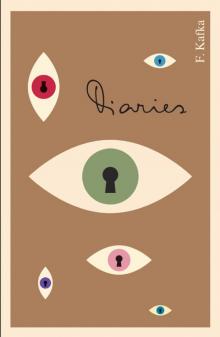 Diaries of Franz Kafka
Diaries of Franz Kafka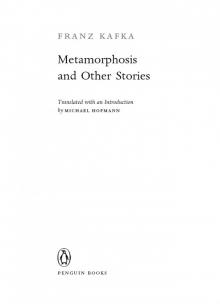 Metamorphosis and Other Stories
Metamorphosis and Other Stories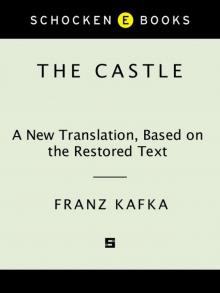 The Castle: A New Translation Based on the Restored Text
The Castle: A New Translation Based on the Restored Text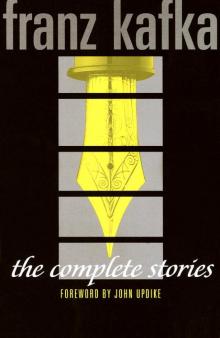 The Complete Stories
The Complete Stories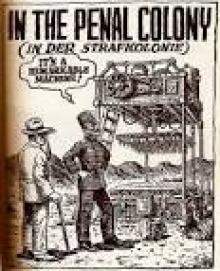 In the Penal Colony
In the Penal Colony The Trial
The Trial Amerika
Amerika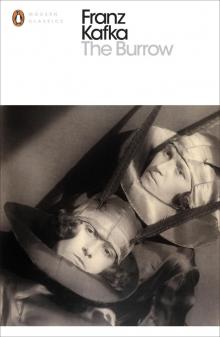 The Burrow: Posthumously Published Short Fiction
The Burrow: Posthumously Published Short Fiction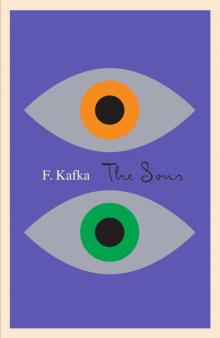 Sons
Sons Letters to Milena
Letters to Milena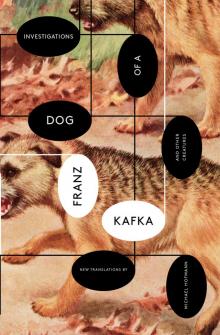 Investigations of a Dog: And Other Creatures
Investigations of a Dog: And Other Creatures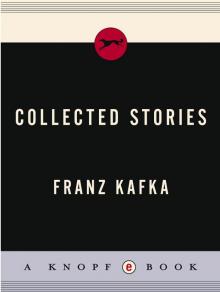 Collected Stories
Collected Stories The Great Wall of China
The Great Wall of China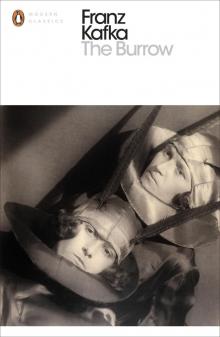 The Burrow
The Burrow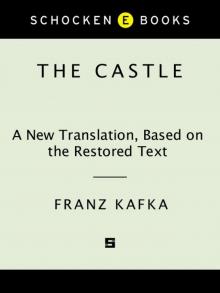 The Castle
The Castle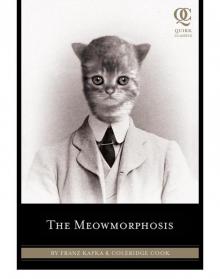 The Meowmorphosis
The Meowmorphosis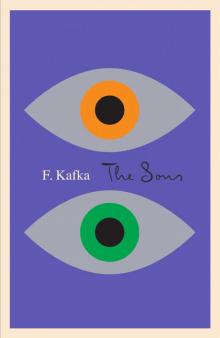 The Sons
The Sons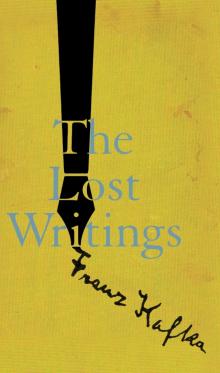 The Lost Writings
The Lost Writings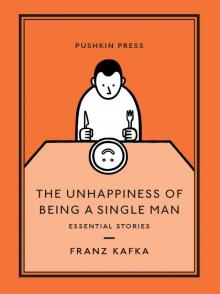 The Unhappiness of Being a Single Man
The Unhappiness of Being a Single Man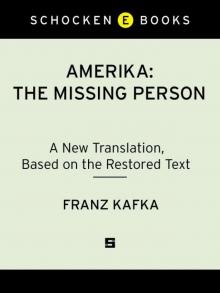 Amerika: The Missing Person: A New Translation, Based on the Restored Text
Amerika: The Missing Person: A New Translation, Based on the Restored Text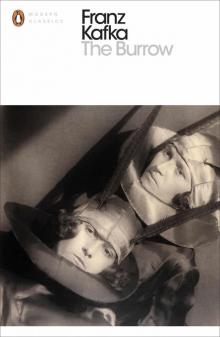 The Burrow: Posthumously Published Short Fiction (Penguin Modern Classics)
The Burrow: Posthumously Published Short Fiction (Penguin Modern Classics)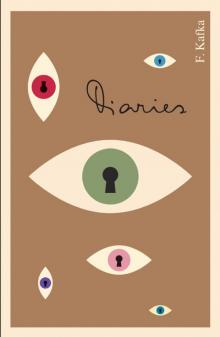 The Diaries of Franz Kafka
The Diaries of Franz Kafka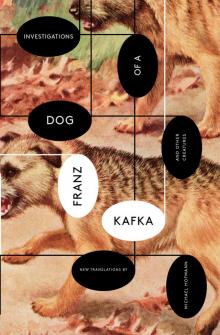 Investigations of a Dog
Investigations of a Dog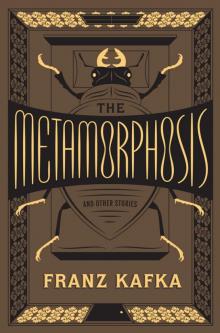 The Metamorphosis and Other Stories
The Metamorphosis and Other Stories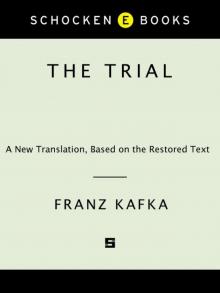 The Trial: A New Translation Based on the Restored Text
The Trial: A New Translation Based on the Restored Text